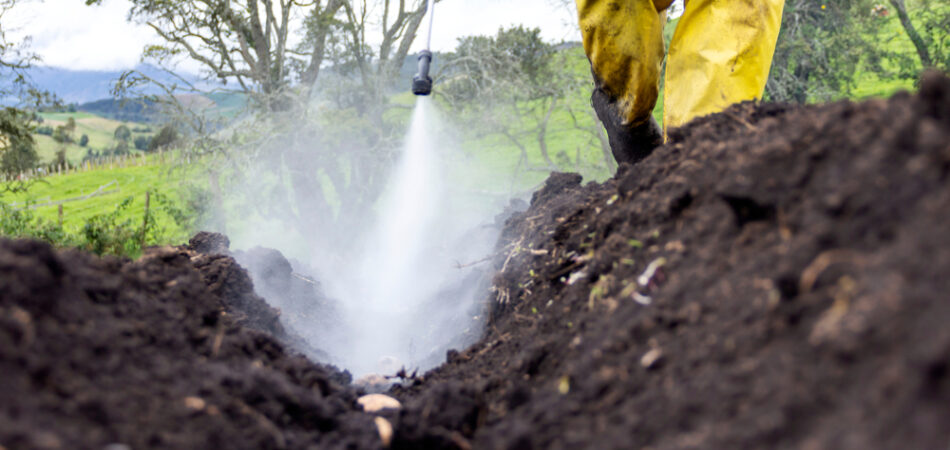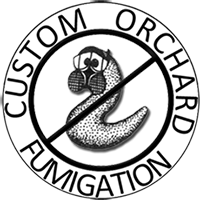
Soil fumigation is a critical part of integrated pest and disease management, especially for growers who cultivate high-value crops like strawberries, tomatoes, peppers, and various ornamentals. The process involves applying chemical fumigants to the soil before planting to eradicate pests, pathogens, nematodes, weed seeds, and other harmful organisms. The success of soil fumigation heavily depends on timing. If done at the wrong time of year or under suboptimal conditions, the treatment may fail, leading to wasted resources and potential crop losses. On the other hand, properly timed fumigation can significantly improve crop yield, reduce pest pressure, and foster healthier plant growth. Understanding the seasonal factors that influence fumigation efficacy is essential for any serious grower or farmer.
The Role of Soil Temperature and Moisture
One of the most important factors in determining the best time to fumigate soil is temperature—both of the soil and the ambient air. Fumigants are volatile compounds, meaning they depend on temperature to effectively move through the soil profile and act against the targeted organisms. Most soil fumigants require a minimum soil temperature of around 50°F (10°C) at a depth of 6 inches to be effective. If the soil is too cold, the fumigant will not volatilize properly, reducing its effectiveness and potentially allowing pests and diseases to survive. Conversely, extremely high temperatures can increase volatilization to a point where the fumigant escapes the soil too quickly, which can pose environmental hazards and reduce the contact time needed to eliminate pests.
Soil moisture is another vital consideration. The ideal moisture level is slightly below field capacity—moist but not saturated. Moist soil allows the fumigant to disperse evenly and maintain effective contact with soil-borne pests and pathogens. Dry soil, on the other hand, may lead to uneven distribution and allow pests to survive in untreated patches. Conversely, overly saturated soil can trap fumigants and prevent proper diffusion, leading to localized phytotoxicity and ineffective treatment. For these reasons, pre-fumigation irrigation is sometimes used to optimize soil conditions, but it must be carefully managed to avoid excess water.
Spring Fumigation: Advantages and Drawbacks
Spring is a popular time for fumigation, particularly for growers who aim to plant crops early in the growing season. One of the primary benefits of spring fumigation is the gradual warming of soil, which typically brings the soil temperature into the optimal range for fumigant activity. Additionally, spring fumigation allows growers to prepare their fields immediately before planting, reducing the likelihood of re-infestation between fumigation and crop establishment.
However, spring fumigation also comes with challenges. Rainfall can be unpredictable in the spring, which may lead to wet soils that are unsuitable for fumigation. Frequent precipitation can also cause delays, forcing growers to wait for fields to dry out before proceeding. These delays can narrow the window of opportunity for effective fumigation and disrupt planting schedules. Furthermore, microbial activity in the spring may not be fully re-established after winter dormancy, which can affect the breakdown of fumigants and the recovery of beneficial soil organisms post-treatment.
For growers considering spring fumigation, it’s crucial to monitor soil conditions closely. Daily temperature and moisture readings should guide decisions about when to fumigate. Using soil thermometers and moisture probes at the recommended depth ensures that conditions are truly optimal. It’s also advisable to check weather forecasts for at least a week following application to avoid unexpected rains that could interfere with fumigant efficacy or containment.
Fall Fumigation: Strategic Benefits for Long-Term Planning
Fall fumigation is another widely practiced approach, particularly for crops planted in the late winter or early spring. One of the most significant advantages of fall fumigation is the extended window it provides for fumigant dissipation. This extended period allows for the soil to “air out” and for microbial communities to begin recovering before planting. In many regions, fall fumigation aligns well with the natural drying of soil and more stable weather patterns, reducing the risk of unexpected rainfall disrupting the process.
Another strategic benefit of fall fumigation is weed seed and pathogen suppression over winter. By applying fumigants after harvest, growers can significantly reduce the reservoir of soil-borne pathogens and pests that might otherwise overwinter and become active in the spring. This timing also aligns with the end of the growing season, providing a logical transition point to prepare fields for the next cycle.
However, timing is again critical. If fumigation occurs too late in the fall, soil temperatures may drop below the effective threshold, compromising the efficacy of the treatment. Additionally, if the ground freezes shortly after application, the fumigant may not adequately penetrate the soil. For this reason, fall fumigation must be scheduled with a keen eye on both historical weather patterns and short-term forecasts.
Growers must also ensure that fumigated fields are properly sealed and managed post-treatment. This includes using tarps or compaction techniques to retain fumigants in the soil long enough to act effectively. Safety measures must also be taken to ensure that the gases do not pose risks to nearby communities or sensitive ecosystems, particularly in cooler conditions when fumigants can linger longer in the air.
Regional and Crop-Specific Considerations
The ideal time to fumigate also depends heavily on the geographic location and the specific crops being grown. For example, in warmer climates such as California’s Central Valley or parts of the southeastern United States, the window for fumigation is broader. Mild winters allow for both fall and early spring fumigation, giving growers more flexibility. In contrast, northern regions with colder, shorter growing seasons may find spring fumigation more feasible, since fall conditions may turn too cold too quickly.
Crop rotation plans also play a role. Some crops are more sensitive to residual fumigant compounds, so the interval between fumigation and planting must be carefully calculated. High-value crops like strawberries or peppers, which are particularly vulnerable to soil-borne diseases, may necessitate fumigation even under less-than-ideal conditions. In such cases, advanced fumigation techniques such as drip application under plastic mulch or the use of reduced-risk fumigants may help mitigate environmental risks while maintaining efficacy.
Soil type further influences fumigation timing. Sandy soils, for instance, tend to have lower organic matter and fewer clay particles, which can allow fumigants to move more freely. However, they also lose fumigant more quickly and require precise application timing to avoid off-target movement. Clay-heavy soils may retain fumigants longer, offering extended protection but also increasing the risk of residue buildup if not managed properly. For these reasons, site-specific assessments and consultation with agricultural extension services or fumigation professionals are strongly recommended.
Planning and Preparation for Effective Fumigation
Regardless of the season chosen, thorough preparation is essential to successful soil fumigation. Fields should be cleared of crop residue, and soil should be tilled to create a uniform profile free of clods and organic debris. Equipment calibration is another critical step. Inaccurate application rates can result in under-dosing (leaving pests alive) or over-dosing (causing phytotoxicity or environmental damage). Many growers also test for soil pathogens and pest populations before fumigating to ensure that the investment is warranted and to tailor the treatment to the specific issues present.
Safety is another key component of planning. Fumigants are toxic substances that must be handled with extreme care. Personal protective equipment (PPE), buffer zones, and signage are not just regulatory requirements—they are essential for protecting human health. Growers should familiarize themselves with local regulations governing fumigant use, including mandatory waiting periods before re-entry and planting.
Finally, post-fumigation practices can influence long-term outcomes. Soil should be monitored to confirm fumigant dissipation, and follow-up practices such as soil amendments, microbial inoculants, or cover crops can help restore beneficial soil biology. These steps are particularly important in organic transition scenarios or sustainable farming systems that aim to reduce reliance on chemical inputs over time.
Conclusion
Soil fumigation is a powerful tool, but its success is closely tied to careful seasonal planning. By understanding the influence of temperature, moisture, crop requirements, and local conditions, growers can choose the best time to fumigate and set the stage for a productive growing season. Whether in spring or fall, or adjusted for specific climates and crops, well-timed fumigation can offer a crucial edge in pest and disease control while contributing to long-term soil health and farm sustainability.
Need Customized Soil Solutions in Pasco, WA?
Founded in 1992, Custom Orchard Fumigation was created by farmers for farmers. We take great pride in providing soil fumigation services to farmers throughout the state. We can also help growers find other services to help in growing their crops. We also provide all paperwork for our services to ensure all regulations are met. Our founder, Chris Ford, has a background in Forest Management, and we are conscious of reducing the environmental impact on the soil and surrounding areas of your plot. Custom Orchard Fumigation invites you to visit our website or give us a call today!
